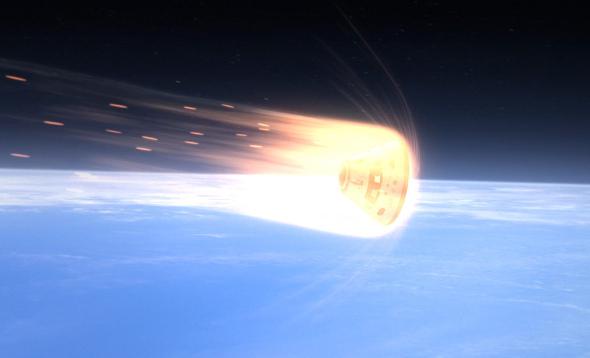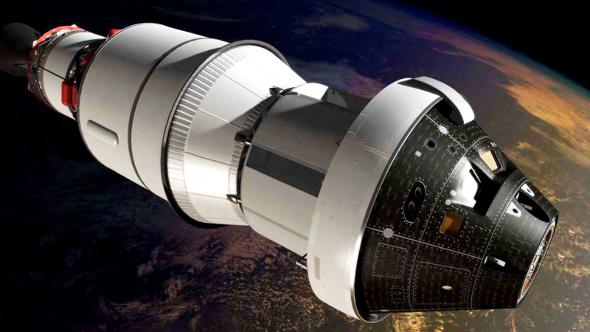On Thursday, Dec. 4, 2014, NASA will take one of the biggest steps in putting humans back into space that it’s attempted in many, many years: the launch of the Orion crew capsule.
Orion—pedantically, the Orion Multi-Purpose Crew Vehicle—is designed to be the next generation crew capsule for deep space missions. Unlike the Shuttle, which never got beyond low-Earth orbit (it never got much higher than a few hundred kilometers off the ground), Orion is meant for grander goals: the Moon, near-Earth asteroids, and even Mars.
Thursday’s launch is uncrewed, and is the first space test of the capsule. It’s scheduled for 12:05 UTC (07:05 Eastern), so get up early if you want to watch it live! It’ll be shown on NASA TV and their Ustream channel, too. The broadcast starts earlier than that, so it looks like I’ll be up long before the Sun that day to watch and live tweet it. The launch window is about 2½ hours long, and as I write this there’s a 60 percent chance the weather will hold up for launch. It’ll go up on top of a ginormous Delta IV Heavy rocket. The planned mission profile is to orbit the Earth twice, heading up to an altitude of about 5,800 kilometers. The mission should take about four hours from launch to splashdown.
At first glance, Orion looks like an old style Apollo capsule; a blunt cone, rounded at the bottom. But there are differences; for one, it’s substantially bigger: 5 meters across at the base, versus just under 4 for Apollo, and it’s taller as well. That actually is a huge difference: Orion has a pressurized volume of nearly 20 cubic meters versus just over six for Apollo. It’ll seem positively roomy by comparison, carrying four to six astronauts (Apollo carried three, and it was tight).
The tech is much more up-to-date, as you might expect. It’s been more than 40 years, after all! There are heads-up displays, LCD screens, and more, much of which is based on Boeing’s Dreamliner airplane cockpits.

Artwork by NASA
The cone shape is a bit of a throwback to the ’60s; the design worked then so it’s being reused now. When the Shuttle dropped down from orbit, it was moving at orbital speeds, about 29,000 kph. When Orion comes back, it will sometimes be moving at nearly Earth’s escape velocity, or 40,000 kph. It will use Earth’s atmosphere to slow itself down, and the rounded blunt design is efficient for that. Not only that, but as it re-enters the angle of its descent is not vertical; the way air flows around the capsule gives it a bit of lift, allowing it to steer without using fuel.
For a solid overview of Orion, check out my friend Mika McKinnon’s article on io9, her followup article about the mission, and NASA’s Orion fact sheet.
Regular readers can guess that I have a lot of conflicting thoughts on Orion and its planned Space Launch System rocket. I’ll save them for a future post; they’d be distracting now and I prefer to focus on this specific mission. Let’s see how this goes before speculating on its future.
Until then: The launch should be very exciting, and I hope it goes nominally!
Correction, Dec. 2, 2014, at 17:15 UTC: I originally wrote that the rounded design gives the capsule a bit of lift, allowing it to be steered without fuel. However, it’s actually the angle of attack—the descent angle not being vertical—that allows this. I’ve also heard that the actual figure of the capsule (the spheroidal shape of the rounded bottom) is not optimal for re-entry; there are better shapes to use, but this is what’s called “heritage” design: It worked for Apollo, so they’re using it again.
